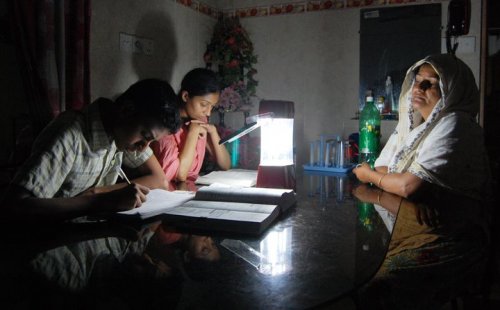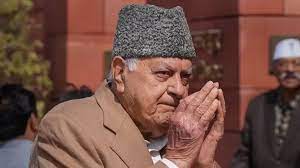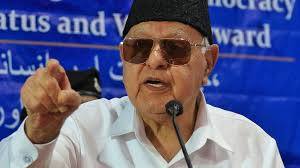Despite the ample hydropower potential in Jammu and Kashmir, power generation has declined to 500 MW, while the government’s reduced procurement of 1400-1500 MW from external power gencos has resulted in a power crisis in the union territory.
Kashmir is currently grappling with an unprecedented power crisis, with power cuts ranging from 5 to 9 hours a day, leaving residents and industries in the region reeling. Officials said that the root cause of this crisis lies in the dwindling power generation within J&K, which currently stands at a mere 500 MW, far below the increasing demand.
Additionally, the government’s decision to reduce power purchases from external generating companies (gencos) has further exacerbated the situation. Sources in the knowhow of the matter revealed that the power deficit in Kashmir alone hovers between 300 to 400 MW, and with the mercury dipping rapidly, the power demand in Kashmir has surged, reaching up to 1500 MW at peak times.
Ironically, the available power supply falls significantly short, hovering around 1000 MW, creating a considerable gap between supply and demand. “In response to this crisis, Kashmir Power Distribution Corporation Limited (KPDCL) is implementing a strategy to prioritise power supply. The first and foremost priority is to ensure uninterrupted electricity to essential facilities such as hospitals, critical installations, metered areas, and industrial estates. Unfortunately, this leaves no alternative but to resort to scheduled load shedding to bridge the demand-supply gap,” the sources said.
According to KPDCL officials, metered areas were facing unscheduled power cuts of 5 to 6 hours per day, while non-metered areas were experiencing even longer cuts, up to 9 hours. Industrial estates are also grappling with erratic power supply, severely affecting industrial production in the region.
Chief Engineer, KPDCL, Javid Yusuf Dar, expressed optimism that the power supply situation would improve in the coming days as additional electricity purchases from external gencos were set to be made.
Officials said that the Baglihar power project was expected to contribute an additional 150 MW of power during the evening hours. “The government has also made arrangements to purchase additional power from Uttar Pradesh (UP) to alleviate the crisis,” they said.
J&K-owned power plants currently contribute 18 percent of J&K’s total energy requirements, with Central Generating Stations (CGS) making up the majority at 70 percent, and the remaining 12 percent sourced from the power exchange and private sector.
As per the official data, J&K-owned power plants play a significant role in the UT’s power generation, with the Baglihar Hydro Electric Project (BHEP) alone generating approximately 900 MW.
Other locally-owned power generation plants like Upper Sindh, Lower Jhelum, and Chenani collectively produce around 200-250 MW. This cumulative generation typically amounts to 1100-1140 MW, however, it drops to approximately 200 MW during winter due to reduced water discharge in rivers when demand surges to over 3000 MW.
According to the Power Development Department (PDD), of the total installed capacity of 1140 MW in the UT sector, the majority, around 1030 MW (88 percent of the total capacity), is utilised within J&K, while the remaining 150 MW is sold to other entities outside J&K as per agreements executed in 2009.
Meanwhile, as Kashmir Valley grapples with prolonged and frustrating power outages, its industrial sector and businesses are facing severe setbacks due to inadequate power supply, resulting in substantial production and productivity losses.
In today’s world, most businesses heavily rely on electricity, be it for industrial production or e-commerce operations. However, the persistent power cuts in the region have led to significant financial losses, prompting both business chambers and industry associations to urge the government to address the issue to stimulate economic growth.
Kashmir Chamber of Commerce and Industry (KCCI) President Javid Tenga expressed his concern about the power crisis and shared that the chamber has already taken up the matter with the officials of the Kashmir Power Development Corporation Limited (KPDCL).
He emphasised that the situation was not only affecting the general populace but also having a severe impact on the business community. “Our industrial sector is bearing the brunt with idle wages to be paid, and we are witnessing production losses due to these power outages. Even hotels are facing power cuts, which tarnishes our image as tourists get disheartened by these interruptions,” Tenga said.
He said that he had discussed the matter with the Chief Engineer of KPDCL, who assured him that the administration would increase power imports from outside generating companies (Gencos) in the coming days to supplement the power supply.
President Federation Chamber of Industries Kashmir (FCIK), Shahid Kamili echoed the concerns, highlighting the detrimental impact of the power crisis on industrial production in the region. “Several industrial estates receive power supply from domestic feeders, where extended power cuts have become a regular occurrence over the past few weeks. These power cuts are jeopardizing production and putting many businesses at risk,” he said. “Our industrial output in Kashmir has taken a hit due to these power cuts.”
Kamili said that many industrial units rely on complex machinery with intricate heating mechanisms, and the erratic power supply was causing significant disruptions. “Some industrial units require time to heat their systems for the processing of raw materials. However, due to the power cuts, the heating process must be repeated to convert solid raw materials into a liquid state,” he said emphasising that such power interruptions result in both financial losses and wasted time for business owners.
Kamili also highlighted the challenges faced by industrial estates in Srinagar and other districts, emphasising that the government’s failure to provide a dedicated power supply to these areas had exacerbated the crisis.






